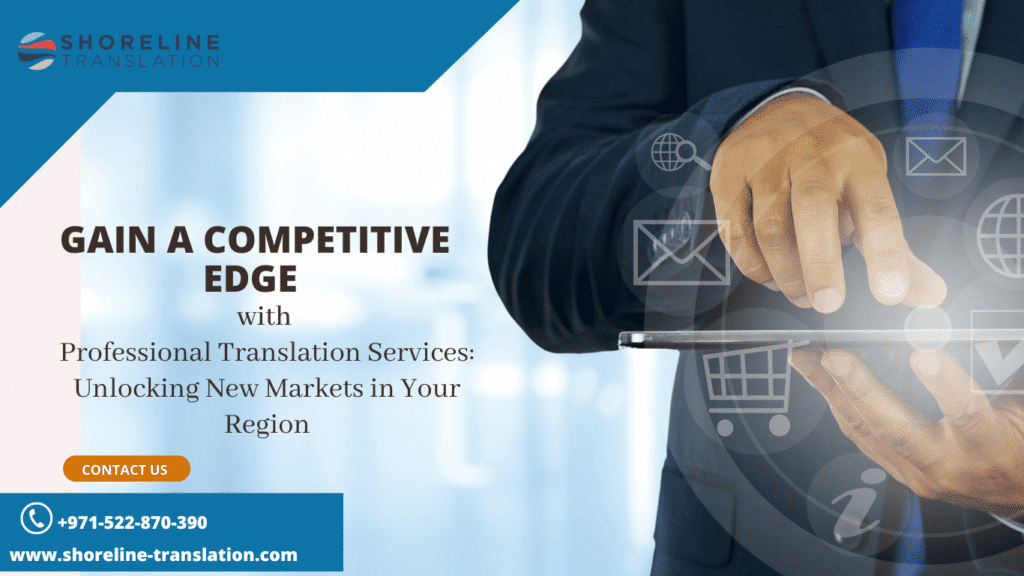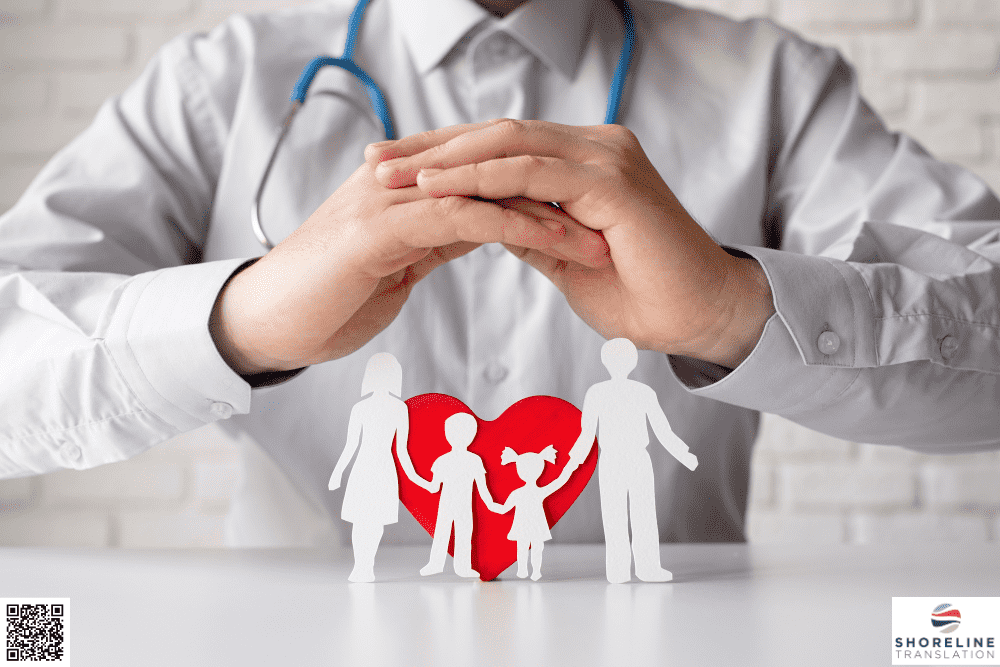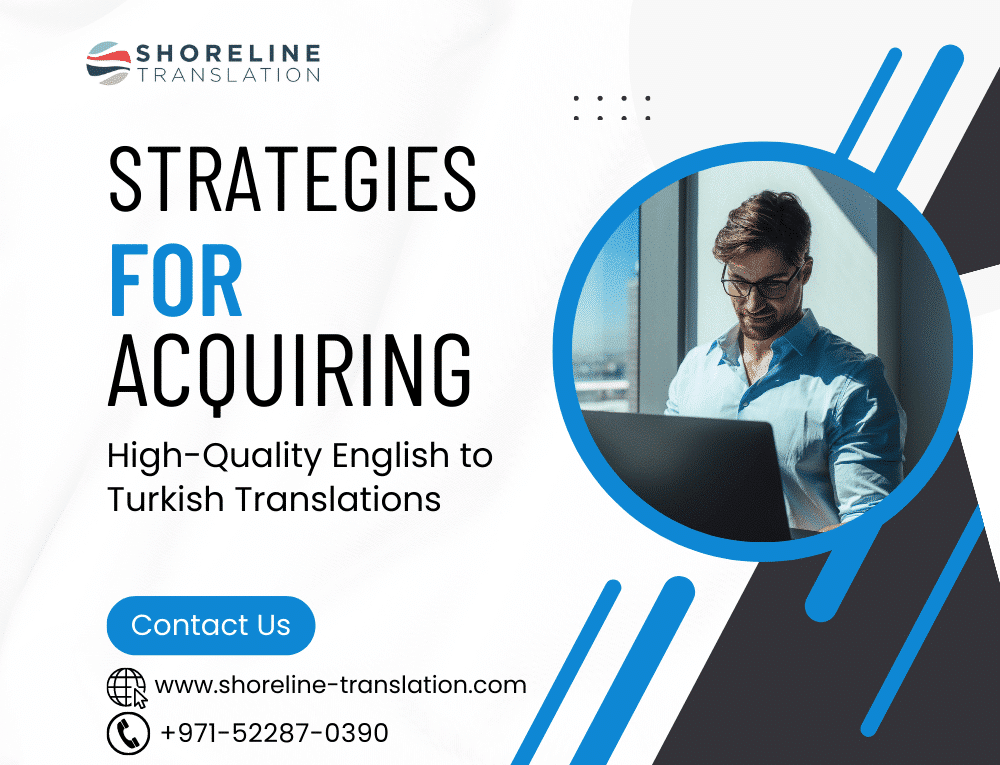Table of Contents
ToggleQuality Assurance in Professional Translations: What to Look For!
In today’s interconnected world, translation plays a crucial role in breaking down language barriers and facilitating global communication. Whether it’s translating marketing materials, legal documents, or software interfaces, the accuracy and quality of translations are of paramount importance. To ensure the highest level of quality, professional translators employ various quality assurance measures. In this blog post, we will explore the key elements of quality assurance in professional translations and provide insights on what to look for when selecting translation services.

Qualified Translators
The foundation of quality assurance in professional translations lies in the expertise and qualifications of the translators themselves. Look for translation services that employ translators with relevant language proficiency, subject matter expertise, and cultural knowledge.
Translators should be native speakers of the target language to ensure fluency and naturalness in their translations. Additionally, certifications such as ISO 17100 (the international standard for translation services) can provide further reassurance about the professionalism and quality of the translation service provider.
One of the key factors in ensuring quality assurance in professional translations is the proficiency and qualifications of the translators themselves. A qualified translator possesses the necessary language skills, subject matter expertise, and cultural knowledge to accurately convey the meaning and intent of the source text in the target language. Here are some important aspects to consider when evaluating the qualifications of translators:
- Language Proficiency: A qualified translator should be a native or near-native speaker of the target language. Fluency in the target language is crucial for producing translations that sound natural and are easily understood by the target audience. They should have an excellent command of grammar, vocabulary, idiomatic expressions, and cultural nuances.
- Subject Matter Expertise: Different translation projects require specific subject matter expertise. Whether it’s legal, medical, technical, or marketing content, translators with relevant knowledge and experience in the specific field can provide accurate and contextually appropriate translations. They should be familiar with industry-specific terminology, conventions, and standards.
- Cultural Competence: Language and culture are closely intertwined, and a qualified translator possesses cultural awareness and sensitivity. They understand the cultural nuances, idioms, and social norms of both the source and target languages, enabling them to accurately adapt the content to the target audience’s cultural context. This ensures that translations are not only linguistically accurate but also culturally appropriate.
- Professional Certifications: Professional certifications such as ISO 17100 can serve as indicators of a translator’s professionalism and commitment to quality. ISO 17100 is an internationally recognized standard for translation services, and translators working for certified translation service providers are typically well-qualified and adhere to strict quality assurance
When selecting a translation service, inquire about the qualifications and expertise of the translators they employ. Look for providers who have a rigorous selection process and ensure that their translators meet the necessary criteria for language proficiency, subject matter knowledge, and cultural competence. Working with qualified translators increases the likelihood of receiving high-quality translations that effectively convey your message to the target audience while maintaining accuracy and cultural sensitivity.
Translation Process
A well-defined and structured translation process is essential for maintaining consistency and accuracy throughout the translation project. The translation service provider should have a clear understanding of the source material and the target audience. They should also follow a rigorous process that includes steps such as initial analysis, glossary creation, translation, proofreading, and final review. Quality assurance checks at each stage help identify and rectify any errors or inconsistencies, ensuring a high-quality end product.
A well-defined and structured translation process is essential for maintaining consistency, accuracy, and quality throughout a translation project. A systematic approach ensures that all necessary steps are followed, potential errors are identified and rectified, and the final translation meets the client’s requirements. Here are the key stages involved in a typical translation process:
- Initial Analysis: The translation process begins with an initial analysis of the source material. Translators review the content to understand its purpose, target audience, and any specific instructions or requirements provided by the client. They assess the complexity of the text, identify potential challenges, and determine the resources and tools needed for the translation.
- Glossary and Style Guide Creation: To maintain consistency in terminology, translators often create a glossary and style guide specific to the project or client. These resources ensure that consistent terminology and writing style are used throughout the translation. They may include preferred translations for specific terms, guidelines for punctuation and formatting, and instructions on tone and style.
- Translation: The translation stage involves converting the source text into the target language while preserving its meaning, intent, and tone. Qualified translators with expertise in the subject matter and language pair work diligently to produce accurate translations. They pay attention to nuances, cultural references, and idiomatic expressions to ensure the translated content is contextually appropriate for the target audience.
- Proofreading and Editing: After the initial translation, a thorough proofreading and editing process takes place. This stage involves reviewing the translation for accuracy, grammar, syntax, style, and overall coherence. Professional proofreaders and editors meticulously check the translated text against the source material and make necessary corrections or improvements. This step helps eliminate errors, improve readability, and enhance the overall quality of the translation.
- Quality Assurance Checks: To ensure the highest level of quality, translation service providers often employ quality assurance (QA) checks at various stages of the translation process. QA checks may involve using specialized software or tools to verify consistency, terminology accuracy, and adherence to specific guidelines. It helps identify any potential errors, inconsistencies, or deviations from the desired quality standards, allowing for prompt corrections and improvements.
- Formatting and Layout: In some cases, translations need to match the formatting and layout of the source document. This step involves adjusting the translated content to mirror the original document’s structure, formatting, and design. It ensures that the final translated document looks professional and is visually consistent with the source material.
- Final Review and Delivery: Before delivering the final translation to the client, a final review takes place. This review involves a comprehensive check of the entire translated document to ensure that all revisions have been incorporated and the translation meets the client’s requirements. Once the review is complete, the translation is delivered to the client in the agreed-upon format and within the specified timeframe.
Throughout the translation process, effective communication between the client and the translation service provider is essential. Regular updates, clarification of doubts, and feedback exchange help ensure that the translation accurately reflects the client’s expectations.
Terminology Management
Consistent and accurate use of terminology is crucial in various domains, such as legal, technical, and medical translations. Professional translation services employ terminology management techniques to maintain consistency and avoid mistranslations. This involves creating and maintaining glossaries, style guides, and translation memories specific to each client or industry. Look for translation providers who have robust terminology management practices in place to ensure that your translations align with your industry standards and brand guidelines.
Consistent and accurate use of terminology is crucial in various domains, such as legal, technical, and medical translations. Terminology management is a process that ensures the consistent and appropriate use of specialized vocabulary and terminology throughout the translation project.
It helps maintain accuracy, clarity, and coherence in translated content. Here are the key aspects of terminology management in professional translations:
Creating and Maintaining Glossaries: One of the fundamental elements of terminology management is the creation and maintenance of glossaries. A glossary is a compilation of specialized terms and their corresponding translations or explanations. Translators work closely with subject matter experts and clients to identify and document relevant terminology. These glossaries serve as a reference for translators, ensuring consistent and accurate usage of terms across multiple translations or projects.
Style Guides: In addition to glossaries, style guides provide guidelines on writing conventions, preferred word choices, punctuation, capitalization, and formatting. Style guides help maintain consistency in writing style and tone throughout the translation project. They also outline any specific client preferences or industry standards that need to be followed.
Translation Memories: Translation memory (TM) is a database that stores previously translated segments or sentences. It allows translators to leverage previously translated content, ensuring consistency in terminology and phrasing across different documents or versions of the same text. TM systems can identify and suggest previously translated segments, saving time and improving translation efficiency.
Industry Standards and Client Specifications: Different industries have specific terminology standards and preferences. Professional translators stay updated on these industry-specific terms and conventions to ensure accurate and appropriate translations. Additionally, translators adhere to any client-specific requirements or specifications related to terminology use. Understanding and incorporating these standards is essential to delivering high-quality translations that align with industry norms and client expectations.
Consistency Checks: During the translation process, terminology management involves conducting consistency checks to ensure that the same terms are consistently used throughout the text. This can be achieved through the use of translation software or dedicated terminology management tools. Consistency checks help identify and rectify any inconsistencies or deviations from established terminology guidelines.
Client Collaboration: Effective terminology management requires collaboration between translators and clients. Translators consult with clients to clarify any ambiguities or doubts regarding specific terms. Client feedback and input are invaluable in refining and expanding glossaries, ensuring that the translations accurately reflect the client’s desired terminology and brand guidelines.
Continuous Improvement: Terminology management is an ongoing process. As translation projects progress, translators update glossaries and style guides based on new terms encountered and client feedback. Translators actively seek feedback from clients and subject matter experts to improve and refine terminology resources. This commitment to continuous improvement ensures that translations remain accurate, consistent, and up-to-date.
By implementing robust terminology management practices, professional translation services ensure that translations are linguistically accurate, aligned with industry-specific standards, and consistent with the client’s brand identity. Effective terminology management enhances the quality and usability of translated content, making it more accessible and understandable to the target audience.
Editing and Proofreading
Even the most experienced translators can make occasional errors or overlook minor details. To mitigate this, professional translation services have a dedicated editing and proofreading process. Translations go through multiple rounds of review by editors and proofreaders who meticulously check for accuracy, grammar, style, and formatting. This step ensures that the final translation is polished, error-free, and meets the highest linguistic standards.
In the realm of professional translations, editing and proofreading are critical stages in ensuring the accuracy, quality, and overall effectiveness of the translated content. These processes involve meticulous review and refinement of the translation to eliminate errors, improve clarity, and enhance readability. Let’s explore the key aspects of editing and proofreading in professional translations:
Error Correction: The primary objective of editing and proofreading is to identify and rectify errors in the translation. This includes grammatical mistakes, punctuation errors, spelling errors, and inconsistencies in language use.
Editors and proofreaders carefully review the translated text line by line, comparing it against the source material and checking for accuracy and fidelity to the original message.
Grammar, Syntax, and Style: Editors and proofreaders pay close attention to grammar, syntax, and style to ensure that the translation reads smoothly and naturally. They correct any grammatical errors, rephrase awkward or confusing sentences, and ensure that the translated text adheres to the appropriate linguistic conventions and style guidelines. This step helps enhance the readability and coherence of the final translation.
Consistency and Cohesion: Maintaining consistency throughout the translation is crucial for conveying a professional image and ensuring a seamless reading experience. Editors and proofreaders check for consistent terminology, phrasing, and formatting across the entire document. They also ensure that the translation maintains cohesion and logical flow, allowing the target audience to easily understand the intended message.
Cultural Adaptation: Editing and proofreading also involve considering cultural adaptation. Professional translators are mindful of cultural nuances and adapt the translation to resonate with the target audience’s cultural context. Editors and proofreaders ensure that the translated content is culturally appropriate, sensitive, and accurately reflects the cultural references and idiomatic expressions of the target language.
Style and Tone: The style and tone of the translation play a crucial role in effectively communicating the intended message. Editors and proofreaders ensure that the translation matches the desired style and tone specified by the client. Whether it’s a formal legal document, a persuasive marketing text, or a casual conversation, they make necessary adjustments to align the translation with the appropriate style and tone.
Localization: In some cases, translations require adaptation to specific regional or local contexts. This process, known as localization, involves modifying certain elements of the translation to better suit the target locale’s cultural norms, preferences, or legal requirements. Editors and proofreaders check for any necessary localization adjustments, ensuring that the translation is appropriate and relevant to the target audience.
Final Polishing: The editing and proofreading stages also involve a final polishing of the translation. Editors and proofreaders pay attention to details such as formatting, punctuation, capitalization, and overall presentation. They ensure that the translated document adheres to any specific formatting or layout requirements and looks professional and polished.
Through the collaborative efforts of qualified translators, editors, and proofreaders, professional translation services can deliver accurate, error-free, and high-quality translations.
The editing and proofreading stages ensure that the final translation meets the client’s requirements, maintains linguistic accuracy, and effectively communicates the desired message to the target audience.
Cultural Adaptation
Language is deeply intertwined with culture, and a successful translation goes beyond mere linguistic accuracy. A high-quality translation service takes into account cultural nuances and adapts the content to resonate with the target audience. Translators should possess cultural awareness and understanding, allowing them to accurately convey the intended meaning while maintaining cultural sensitivity. Look for translation providers who have a strong track record of successfully adapting translations to different cultural contexts.
In professional translations, cultural adaptation plays a crucial role in ensuring that the translated content is not only linguistically accurate but also culturally appropriate and relevant to the target audience. Cultural adaptation involves modifying the translation to reflect the cultural nuances, values, and preferences of the target language and culture. Let’s explore the key aspects of cultural adaptation in professional translations:
Understanding Cultural Nuances: Cultural adaptation begins with a deep understanding of the target culture. Translators familiarize themselves with the cultural context, social norms, idiomatic expressions, and cultural references of the target language. This understanding allows them to accurately convey the intended meaning and tone of the source text in a manner that resonates with the target audience.
Localization: Localization is an essential aspect of cultural adaptation. It involves adapting certain elements of the translation to suit the specific regional or local context of the target audience. This may include adapting measurements, currencies, dates, or any other culturally specific references. Localization ensures that the translation feels natural and relatable to the target audience, enhancing their understanding and engagement with the content.
Idioms and Expressions: Every language has its own set of idiomatic expressions that may not have a direct equivalent in the target language. Translators need to adapt and find culturally appropriate alternatives that convey the same meaning and intent. They carefully consider the target audience’s cultural background to ensure that the translated idioms and expressions resonate with them and accurately reflect the original intent of the source text.
Sensitivity to Cultural Differences: Translators must be sensitive to cultural differences and potential sensitivities that may arise in the translation process. They carefully navigate cultural taboos, religious references, or any other content that may be considered offensive or inappropriate in the target culture. Translators exercise cultural sensitivity and make necessary adaptations to ensure that the translated content is respectful and aligns with the cultural norms of the target audience.
Adapting Humor and Wordplay: Humor and wordplay are highly context-dependent and can be challenging to translate. Translators need to adapt jokes, puns, and humor to suit the cultural context of the target audience. This often involves finding culturally appropriate alternatives or rephrasing the content to maintain the intended humor and wordplay in the translation.
Target Audience Research: Effective cultural adaptation involves thorough research on the target audience. Translators study the demographics, preferences, and cultural nuances of the specific target audience to tailor the translation accordingly. They take into account factors such as age, gender, socio-cultural background, and regional variations to ensure that the translation effectively connects with and engages the intended audience.
Collaboration with Native Speakers: Translators often collaborate with native speakers or cultural consultants from the target culture to ensure accurate cultural adaptation. These individuals provide valuable insights into the cultural nuances, idiomatic expressions, and sensitivities of the target audience. Their expertise helps refine the translation and ensure its cultural authenticity.
By incorporating cultural adaptation into the translation process, professional translation services can deliver translations that not only accurately convey the message but also resonate with the target audience on a cultural level. Cultural adaptation enhances the overall effectiveness of the translation, improves audience engagement, and helps build positive connections with the target audience.
Quality Control Tools
Technological advancements have significantly improved the quality assurance process in professional translations. Translation service providers use a range of quality control tools such as translation memory systems, computer-assisted translation (CAT) tools, and automated quality checks. These tools enhance efficiency, consistency, and accuracy in translations. When selecting a translation service, inquire about the tools and technologies they utilize to ensure that your translations are of the highest quality.
In the field of professional translations, quality control is essential to ensure accurate and high-quality translations. Quality control tools are valuable resources that assist in identifying and rectifying errors, inconsistencies, and deviations from desired quality standards. These tools help streamline the quality control process and improve the overall quality of translations. Here are some commonly used quality control tools in professional translations:
Computer-Assisted Translation (CAT) Tools: CAT tools are widely used in the translation industry to enhance productivity and maintain consistency. These tools provide features such as translation memory, terminology management, and quality assurance checks. They allow translators to leverage previously translated segments, ensure consistent terminology, and perform quality control checks on the translated content.
Spell Checkers and Grammar Checkers: Spell checkers and grammar checkers are valuable tools for identifying and rectifying spelling and grammatical errors in the translated text. These tools automatically scan the text and highlight potential errors, allowing translators to make necessary corrections. They help improve the overall accuracy and readability of the translation.
Terminology Management Tools: Terminology management tools assist in maintaining consistent terminology throughout the translation. These tools allow translators to create and manage glossaries, ensuring the accurate and consistent use of specialized vocabulary. They help minimize terminology errors and improve the overall quality and consistency of translations.
Style Guide and Writing Guidelines: Style guides and writing guidelines serve as important quality control tools. They provide specific instructions on writing conventions, preferred word choices, formatting, and punctuation. By adhering to these guidelines, translators ensure consistency in writing style and tone, improving the overall quality and coherence of the translation.
Quality Assurance (QA) Tools: QA tools are specifically designed to perform various checks and validations on the translated content. They help identify and rectify errors, inconsistencies, and deviations from quality standards. QA tools can verify consistency in terminology, formatting, punctuation, and adherence to specific guidelines. They provide detailed reports and suggestions for improvement, facilitating the quality control process.
Comparison Tools: Comparison tools allow translators to compare the translated text with the source text to identify any discrepancies or missing cont
ent. These tools help ensure the accuracy and completeness of the translation by highlighting any inconsistencies or omissions.
Human Review and Feedback: While technological tools are valuable, human review and feedback remain essential for quality control. Qualified translators, proofreaders, and editors play a critical role in reviewing the translation, identifying errors, and providing feedback for improvement. Their expertise and attention to detail are instrumental in maintaining high-quality translations.
By leveraging these quality control tools, translation service providers can enhance the accuracy, consistency, and overall quality of translations. These tools streamline the quality control process, improve productivity, and ensure that the translated content meets the desired quality standards and client expectations.
Confidentiality and Data Security
Translation often involves handling sensitive and confidential information, such as legal contracts or proprietary business documents. Ensure that the translation service provider has robust security measures in place to protect your data. Look for providers who adhere to industry best practices, including secure file transfer protocols, encryption, and non-disclosure agreements. A reliable translation service will prioritize the confidentiality and security of your information.
Confidentiality and data security are of utmost importance in professional translations. Language service providers handle sensitive and confidential information during the translation process, such as legal documents, financial statements, medical records, and intellectual property. Clients trust translation service providers to handle their data securely and ensure its confidentiality. Here are key considerations regarding confidentiality and data security in professional translations:
Non-Disclosure Agreements (NDAs): Translation service providers typically establish a legal framework for confidentiality through the use of Non-Disclosure Agreements. NDAs outline the obligations of both the translation service provider and the client regarding the protection and non-disclosure of sensitive information. They serve as a foundation for maintaining confidentiality and ensuring that all parties involved in the translation process handle the data responsibly.
Secure File Transfer: Secure methods for file transfer are essential to protect the confidentiality of data during the translation process. Translation service providers employ encrypted file transfer protocols, such as Secure File Transfer Protocol (SFTP) or Virtual Private Networks (VPNs), to safeguard data during transmission. These measures prevent unauthorized access to sensitive information.
Data Encryption: Translation service providers often implement data encryption practices to protect client data. Encryption converts data into a coded form that can only be deciphered with the appropriate decryption key. By encrypting data both at rest and in transit, translation service providers ensure that even if unauthorized individuals gain access to the data, it remains unreadable and inaccessible.
Secure Storage: Confidential client data should be stored securely to prevent unauthorized access or data breaches. Translation service providers utilize secure servers and data centers that have robust security measures in place, such as firewalls, intrusion detection systems, and access controls. These measures protect the data from external threats and limit access to authorized personnel only.
Confidentiality Policies and Training: Translation service providers establish comprehensive confidentiality policies that outline procedures for handling and protecting client data. These policies are communicated to all employees and contractors involved in the translation process. Additionally, regular training and awareness programs educate staff about data security best practices and the importance of maintaining confidentiality.
Vendor and Partner Due Diligence: Translation service providers carefully select vendors and partners who also adhere to strict confidentiality and data security standards. They evaluate the security measures and data protection practices of their partners to ensure that client data remains confidential and secure throughout the translation supply chain.
Compliance with Regulations: Translation service providers adhere to applicable data protection regulations, such as the General Data Protection Regulation (GDPR) in the European Union or the Health Insurance Portability and Accountability Act (HIPAA) in the healthcare sector. Compliance with these regulations ensures that client data is handled in a legally compliant manner and that appropriate security measures are in place.
By implementing robust confidentiality and data security measures, translation service providers instill confidence in their clients and demonstrate their commitment to protecting sensitive information. Confidentiality and data security are integral to building trust and maintaining the integrity of professional translations.
FAQ about Quality Assurance in Professional Translations
Q: What is quality assurance in professional translations?
A: Quality assurance in professional translations refers to the process of ensuring that translations are accurate, reliable, culturally appropriate, and meet the highest quality standards. It involves various measures, including the use of qualified translators, adherence to the translation process, terminology management, editing and proofreading, cultural adaptation, and the use of quality control tools.
Q: Why is quality assurance important in professional translations?
A: Quality assurance is crucial in professional translations to deliver translations that effectively communicate the intended message, maintain consistency, and resonate with the target audience. It ensures accuracy, reliability, and cultural appropriateness, enhancing the overall quality and impact of the translations.
Q: What qualifications should professional translators have?
A: Professional translators should have strong linguistic skills in both the source and target languages. They should possess subject matter expertise in the relevant field, cultural knowledge, and industry-specific terminology. Formal education, certifications, and experience in translation are also important qualifications for professional translators.
Q: What is the translation process?
A: The translation process typically involves several stages, including translation, editing, and proofreading. During translation, the source text is rendered into the target language. The editing stage focuses on refining the translation for accuracy, clarity, and adherence to guidelines. Proofreading involves a final review to eliminate any errors or inconsistencies.
Q: How is terminology managed in professional translations?
A: Terminology management involves creating and maintaining glossaries of preferred terms and specialized vocabulary. Computer-assisted translation (CAT) tools are often utilized to ensure consistency in terminology across different translation projects. Collaboration with clients and subject matter experts is also essential for establishing and maintaining accurate and consistent terminology.
Q: What is cultural adaptation in professional translations?
A: Cultural adaptation refers to modifying the translation to align with the cultural nuances, idiomatic expressions, and preferences of the target language and culture. It ensures that the translated content is not only linguistically accurate but also culturally appropriate and relatable to the target audience.
Q: What are quality control tools in professional translations?
A: Quality control tools are resources used to identify and rectify errors, inconsistencies, and deviations from quality standards in translations. They include computer-assisted translation (CAT) tools, spell checkers, grammar checkers, comparison tools, and other software that facilitate quality assurance checks and improve the accuracy and overall quality of translations.
Q: How is confidentiality and data security ensured in professional translations?
A: Confidentiality and data security are ensured through the use of non-disclosure agreements (NDAs), secure file transfer protocols, data encryption, secure storage practices, confidentiality policies, staff training, vendor due diligence, and compliance with data protection regulations. These measures protect sensitive client information and maintain the privacy and integrity of data throughout the translation process.
Q: How can I ensure high-quality translations for my business?
A: To ensure high-quality translations for your business, it is advisable to work with reputable translation service providers that prioritize quality assurance. Look for providers with a strong track record, qualified translators, rigorous quality control processes, and a commitment to confidentiality and data security. Clear communication, providing reference materials, and collaborating closely with the translation team can also contribute to achieving high-quality translations tailored to your business needs.
Q: How long does the quality assurance process take for a translation project?
A: The duration of the quality assurance process depends on various factors, including the complexity and length of the translation project, the availability of resources, and the specific requirements of the client. It is recommended to discuss timelines and turnaround expectations with the translation service provider to ensure that sufficient time is allocated for quality assurance without compromising the delivery schedule.
Q: What should I do if I am not satisfied with the quality of a translation?
A: If you are not satisfied with the quality of a translation, it is important to communicate your concerns to the translation service provider promptly. Reputable providers will have processes in place to address and resolve any issues. They may offer revisions, additional proofreading, or other measures to ensure that the final translation meets your expectations and quality standards.
Conclusion
In an increasingly globalized world, professional translations are essential for effective communication across borders. Quality assurance in professional translations ensures accurate, reliable, and culturally appropriate content. When selecting a translation service, consider the qualifications and expertise of translators, the translation process, terminology management, editing and proofreading practices, cultural adaptation capabilities, quality control tools, and data security measures.
By choosing a translation service that prioritizes these elements, you can ensure that your translations meet the highest standards of quality and effectively convey your message to your target audience.
Quality assurance in professional translations is essential for delivering accurate, reliable, and culturally appropriate translations that meet the expectations of clients and resonate with the target audience. Throughout this blog post, we have explored various aspects of quality assurance in professional translations, including the importance of qualified translators, the translation process, terminology management, editing and proofreading, cultural adaptation, and the use of quality control tools.
Qualified translators with expertise in the subject matter and target language play a vital role in ensuring the quality of translations. They possess the linguistic skills, cultural knowledge, and industry-specific expertise required to produce accurate and contextually appropriate translations.
The translation process involves several stages, including translation, editing, and proofreading, each contributing to the overall quality of the final translation. Attention to detail, adherence to style and tone guidelines, and maintaining consistency are crucial during these stages.
Terminology management ensures consistency and accuracy in the use of specialized vocabulary. It involves creating and maintaining glossaries, leveraging computer-assisted translation (CAT) tools, and collaborating with clients to establish preferred terminology.
Editing and proofreading are critical for eliminating errors, improving readability, and ensuring linguistic accuracy. These stages involve thorough review, correction of grammatical and stylistic errors, and adherence to cultural and regional sensitivities.
Cultural adaptation is essential for translations to resonate with the target audience. It involves adapting the translation to reflect the cultural nuances, idiomatic expressions, and preferences of the target language and culture.
The use of quality control tools, such as computer-assisted translation (CAT) tools, spell checkers, grammar checkers, and comparison tools, enhances the efficiency and accuracy of the quality assurance process.
Confidentiality and data security are fundamental considerations in professional translations. Non-disclosure agreements, secure file transfer protocols, data encryption, and secure storage protect sensitive client information and ensure confidentiality.
In conclusion, quality assurance in professional translations requires a combination of qualified translators, adherence to the translation process, terminology management, thorough editing and proofreading, cultural adaptation, the use of quality control tools, and a commitment to confidentiality and data security. By incorporating these elements into their workflow, translation service providers can consistently deliver high-quality translations that meet the diverse needs and expectations of clients in today’s globalized world.





